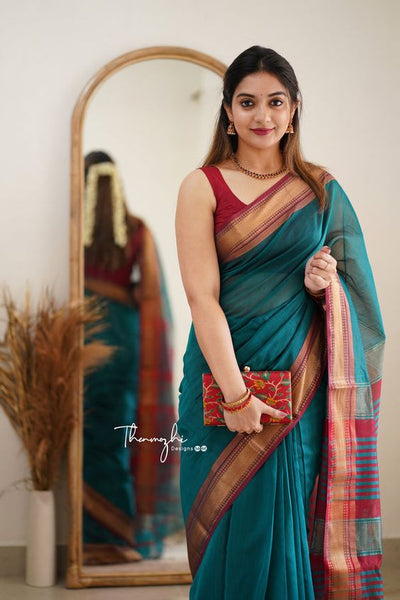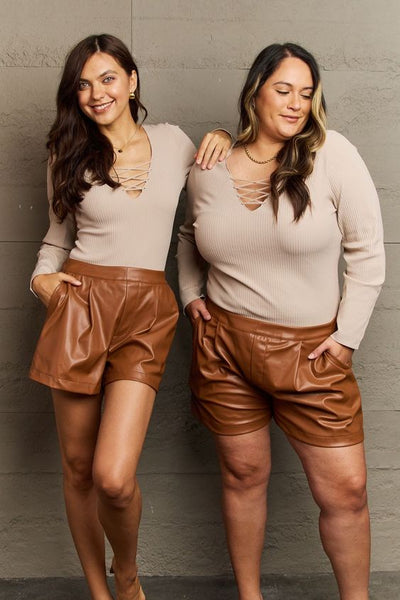How to Choose the Fabric According to the Body Type?
We all get inspired by celebrity style and dream of looking as gorgeous as the stars when they strut the red carpet in flowing designer gowns. But before rushing to copy their looks, it's wise to remember that those outfits are tailored to complement the actress' individual body type. So, understanding your own body shape and structure is key to picking fabrics with textures and drapes that spotlight your best assets.
Our bodies come in marvellous variations - straight, curvy, petite, tall - all uniquely wonderful. Yet, often, we chase rigid beauty ideals that overlook our natural gifts. Learning which fabrics suit your lines liberates confidence to dress in harmony with your authentic self.
The right textiles can help minimise areas you feel self-conscious about while accentuating the favourite features you want to show off. It comes down to picking materials with the ideal weight, shine, flow and clings to balance your silhouette. This allows the spotlight on your beauty.
For example, rectangular body types may prefer fabrics with bounce and volume. Petite frames tend to shine in delicate, lightweight materials that elongate the appearance of height. Finding options for your blessed body ultimately takes the guesswork out of getting dressed.
No matter your shape or size, the fabric holds power. Its tactile quality directly impacts comfort, mood and self-image. We carry a diverse collection of the finest fabrics so you can select the best match for your next project tailored to your unique proportions. Discover figure-flattering choices designed to inspire confidence and bring visions to life!

Fabrics That Can Go with Different Body Types
- Rectangle-shaped bodies, fabrics with fluid drapes and details like ruffles help create curves, while diagonal lines add dimension.
- Pear-shaped figures can pick empire waist tops and A-line skirts in crisp fabrics to balance shoulders and hips.
- Hourglass figures aim for versatile fabrics like jersey knits that smoothly hug curves without constricting.
- Apple-shaped bodies look best in wraparound styles, and V necklines are made using fabrics providing structure yet stretch to flatter fuller middles.
- Inverted triangle athletic builds shine with halters, racerbacks and sleek fabrics emphasising the shoulders. Ultimately, fabric selection helps balance and beautify all body types.
Fabrics that allow your skin to breathe
Choosing clothes made from fabrics that allow your skin to breathe is crucial for staying comfortable in warm weather. When the fabrics are breathable, they wick moisture and sweat away from your body through the microscopic pores present in them. Here are the key points highlighting fabrics that allow the skin to breathe:
- Cotton - Lightweight, airy and highly absorptive natural fabric that keeps skin cool and comfortable
- Linen - Has moisture-absorbing quality and room for ventilation due to natural fibres.
- Silk - Helps regulate skin temperature and maintain freshness
- Wool - Allows passage of vapour and moisture through natural vapour transmission capability.

- Polyester & Nylon blends - Offer breathability via embedded microfibers that provide irreversible moisture transportation
- Open & Loose Weaves - Provide breathability through a roomy or porous fabric structure that enables ventilation
- Light Knits - The knitted structure also has space for airflow and assisting cooling.
It is ideal for picking fabrics crafted using breathable fibres or fabric production methods, providing absorbency, cooling aeration and quick drying ability.
Fabrics according to Seasons
- Winter - Wool, flannel, velvet, corduroy, cashmere, brocade. Insulating thick fabrics retain heat and have textures that keep you warm.
- Spring - Lightweight cotton, linen blends, jersey knits, chiffon, seersucker. Breathable fabrics that allow airflow as temperatures fluctuate.
- Summer - Poplin cotton, microfiber blends, loose plain weave natural fabrics like silk, hemp, and bamboo. Materials that feel cool, dry fast and breathe well in heat.
- Monsoons - Denim, twill weave cotton, polyester raincoats, water-resistant nylon. Durable, tightly woven fabrics that withstand humidity and endure rains.
- All Seasons - Broadcloth, jersey cotton lycra, and most knit fabrics transition well from cooler to warmer seasons with layering. Medium-weight versatile fabrics work across seasons.
The ideal fabric changes as the weather shifts. Adjust textile qualities and weights suitable for the current climate and seasonal fashion trends. Maintain comfort no matter the forecast.

Fabrics Suited for Sensitive Skin
Individuals with sensitive skin or textile allergies tend to tolerate natural breathable fabrics like cotton, silk and cashmere well as they allow skin to breathe and minimise irritation. Seek out the highest grades of extra-long staple Egyptian or Pima cotton woven into flexible interlock knits for ultra-softness against delicate skin.
Light, smooth silk also prevents inflammation. Superfine Merino wool and buttery soft cashmere in lightweight weaves make warm, gentle base layers that prevent itchiness.
Avoid synthetic fabrics, which can exacerbate skin reactions and rashes due to chemical processing residues.
Look for the GOTS and BCI standard when choosing clean fabrics that are safe for sensitive issues and devoid of toxic dyestuffs and chemicals.
Fabrics That Go with Every Body Type
In reality, a spectacular fabric selection exists today to appeal to multiple body shapes and sizes. With unlimited blends and innovative textile technology, emphasise your favourite features through specialised fabric picks complementing individual figures. Here are a few fabrics and ideas on how to style them:
- Stretch lace fabric hugs curves, slimming flatteringly
- Flowy chiffon and soft jersey skim gracefully over frames
- Cotton sateen and silk highlighted feminine assets
- Nylon Lycra in classic styles allowed movement flexibility
- Textural cotton tweed or boucle added dimensional depth
- Minimal matte jersey dressed in unified straight lines
- Structured brocade boosted bustlines attractively

Colours
Strategically leverage the visual impacts colour creates through optical illusions that skillfully highlight or downplay areas. Here are how different colours can help accentuate your body type better
- Cool tones like blue, green and silver grey visually recede to slenderise curvy frames like pears or apples
- Warm earth tones of coral, gold and cream attractively contrast olive complexions, enhancing depth
- Bold, saturated hues like ruby red, citrus orange and fuchsia pink energise petite shapes
- Subtle neutrals like beige, taupe and ecru give vertical length to balance broad shoulders
- Vibrant jewel tones draw the eye outwards, countering inverted triangle athletic builds
- Darker navy, black, or chocolate minimise bulk through slimming shadows on fuller figures
Conclusion
Rather than forcing your body to conform to the latest fashion trends, choose fabrics with properties that gracefully adorn your frame. This nourishes confidence and comfort to embody your best self. By understanding textures and silhouettes that skillfully showcase your signature proportions and inner glow, you unlock fashion's potential for self-expression, not restriction.
Treat your body as the vessel it is. Fashion fabrics honour their shape as a unique gift meant to be admired, not moulded to society's ideals. When you dress aligned with your authentic beauty, you radiate joyful society through a fabric's threads. This makes the style unconditional and liberating.
Frequently Asked Questions
1. What are the fabrics that make you look slimmer?
Ans: Fabrics with structures that skim the body like ponte knits, stretch satin and firm cotton blends trick the eye to appear slimming without overly clinging.
2. What are natural fabrics for health?
Ans: Breathable, moisture-wicking natural fabrics like organic cotton, linen, silk and wool allow airflow for skin health and contain no toxic chemicals from synthesis.
3. Which fabric is best for hair?
Ans: Silk, satin and ultra-fine high-grade cotton with smooth surfaces reduces friction that causes breakage, knotting or lifting of hair strands.
4. Which type of cloth is best for the face?
Ans: Soft, gentle fabrics like well-washed cotton, silk, cashmere or Tencel feel soothing against delicate facial skin vulnerable to irritation.
 Call Us
Call Us
